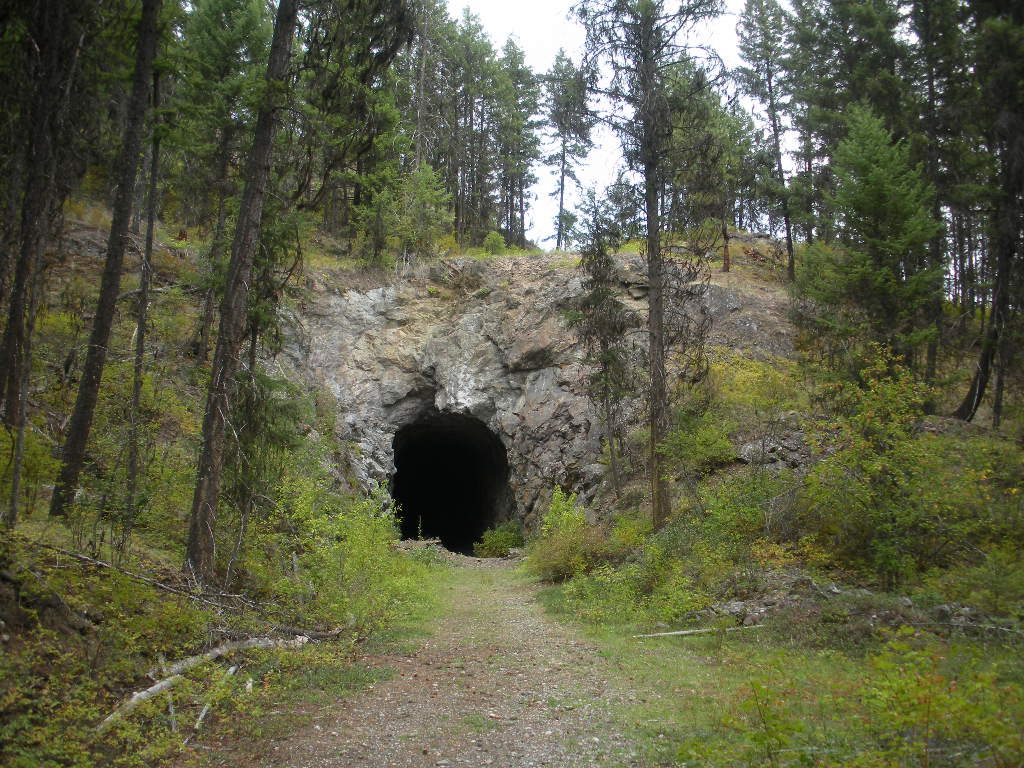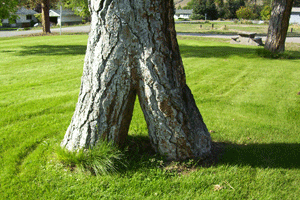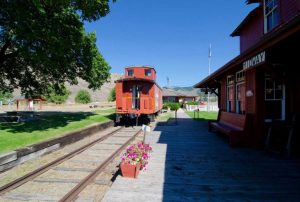Our Story Starts Here.
In the 1800’s, fur traders, prospectors, and white settlers began moving though this sun-drenched valley. Until then, it had been a traditional hunting ground and place for gathering the medicinal rock rose roots. The U.S. claimed this area and all of BC north to 54 degrees until the treaty of 1846 set the 49th parallel as the border. But traffic and trade followed the river valleys north and south. When gold was discovered at Rock Creek in 1859, and US miners came swarming into the region, Governor Douglas saw that an east-west route through the interior was vital for maintaining British control. He dispatched an energetic young engineer named Edgar Dewdney who hacked out a four-foot-wide road from Hope to Rock Creek in 1860; then with the discovery of gold at Wild Horse Creek in the Kootenays, Dewdney again tackled the task and pushed the Dewdney Trail on through the Midway Valley in the spring of 1865.
By 1884, Midway had it’s first resident, a Mr. Henry Nicholson, and by 1889 Louis Eholt owned a thriving ranch on what is now the town site of Midway, known then as the Eholts.
A Montreal-based company bought the site for a smelter in 1892, but that plan fell though, and a year later the town site was plotted. The new town’s original name, Boundary City, was changed in 1894 to Midway by Capt. R.C. Adams of Montreal (one of the owners of the townsite) as the original name was too similar to the nearby smelter town of Boundary Falls. He is said to have taken the name from the Midway Plaisance at the Chicago’s World Fair of 1893.
There are a number of reasons though that made Midway a suitable name:
1. Midway was located approximately midway between Penticton and Marcus, Washington, then its nearest railway point.
2. Midway stands somewhere near mid-point on the old Dewdney Trail, from its beginning at Hope to its terminus at Wild Horse Creek, near Fort Steele.
3. Midway stands approximately midway between the Rockies and the Pacific.
In 1895, the first provincial policeman was posted here and in 1897 Canada Customs arrived.
In 1900, Midway became the western terminus of the Columbia and Western Railway, (a subsidiary of the CPR). A copy of the Midway Advance Newspaper of June 17, 1901 carries advertising for five hotels, a meat market, dry goods store, pharmacy, bakery, wagon and carriage builder, stationery shop, sawmill, and a stagecoach company in the burgeoning little town.
The following decade saw feuding railroad companies, litigation, a series of railroad plans, short-lived railroad ventures, and violence all centred in Midway. In November 1905, a pitched battle with shots fired was waged between CPR workers and a crew of the Vancouver, Victoria, and Eastern Railway (known as the Washington and Great Northern Railway in the US) which was determined to run a line north from Spokane into Midway. Expropriation was granted to the VVE, and in 1905 Midway had it’s second railroad.
On July 5, 1910, the sod was turned on yet another railroad venture – the Kettle Valley Line – to link Midway to the west coast, with Andrew McCulloch as chief engineer. The first eastbound passenger trail left Midway on May 31, 1915; the last passenger train on the Kettle Valley Line passed through Midway on January 17, 1964.
Today, although the tracks have been removed, you can still catch a glimpse of a bygone era. Stand on the original platform and imagine the hustle and bustle of the old train station, now converted into the Kettle Valley Museum.
Gold and the railroads shaped Midway’s past; service industries, the lumber industry, and tourism shape Midway today.
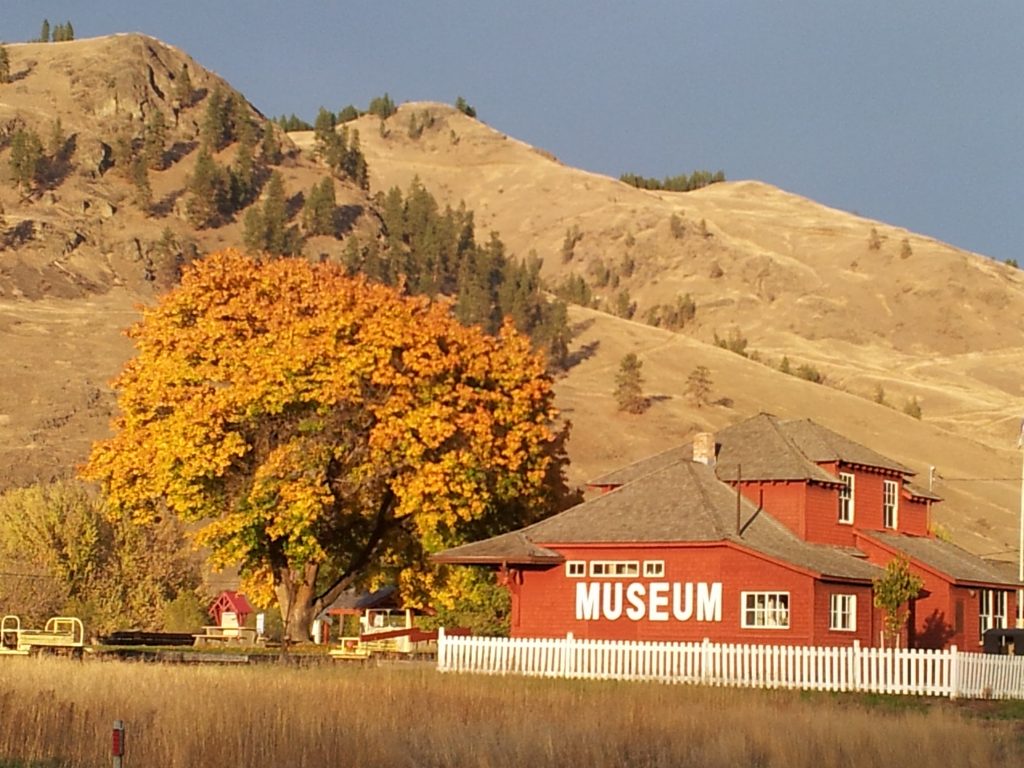
Located at “Mile 0” of the Kettle Valley Railway, one of the Museum’s main attractions is the original Station House. It was built in 1900 and currently houses exhibits commemorating the steam railway era of southern British Columbia and the British Columbia Provincial Police force. Set in a shaded picnic area adjacent to Highway 3, visitors can also climb aboard a restored Canadian Pacific Railway caboose and many other outdoor artifacts. The main museum houses interpretive exhibits on the Kettle River Valley’s rich cultural heritage, along with a gift shop that showcases regional history and local arts and crafts.
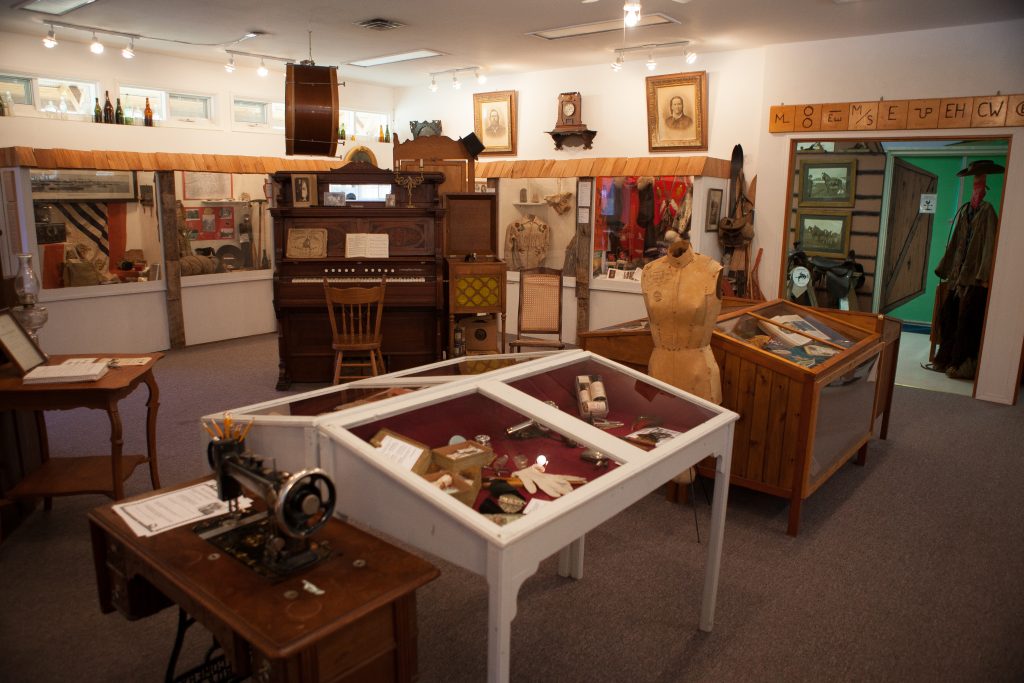
Open daily, May to September.
Hours of Operation:
May, June, and September: Friday thru Monday, 10 am to 4:30 pm
July-August: Daily 10 am to 4:30 pm or by appointment
Ph. 250-449-2614
email. kettlerivermuseum@shaw.ca
Website: kettlerivermuseum.org
Facebook: Kettle River Museum
Visit the Community Memories Virtual Museum for a look at rural life in Midway and the Kettle River Valley
